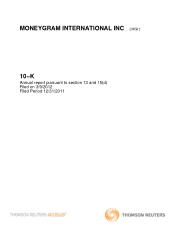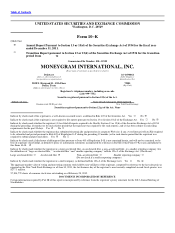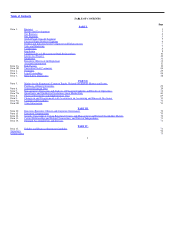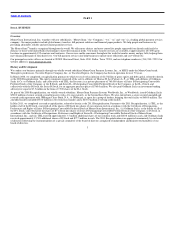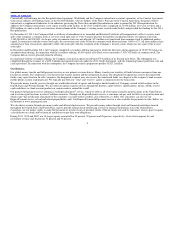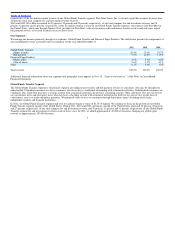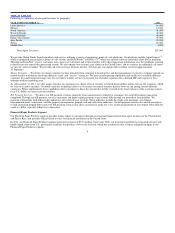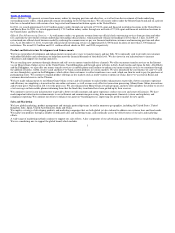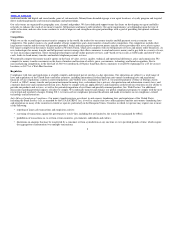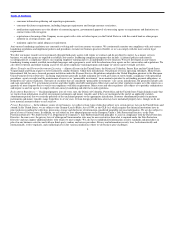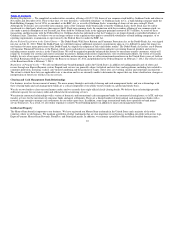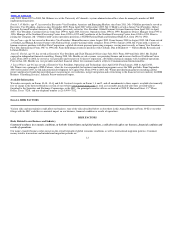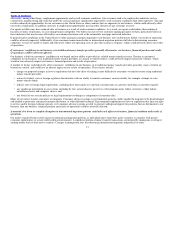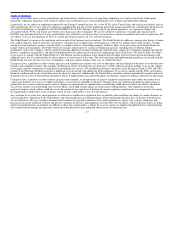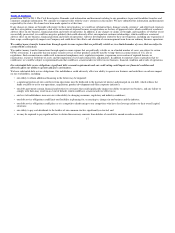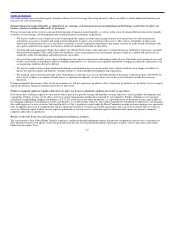MoneyGram 2011 Annual Report Download - page 9
Download and view the complete annual report
Please find page 9 of the 2011 MoneyGram annual report below. You can navigate through the pages in the report by either clicking on the pages listed below, or by using the keyword search tool below to find specific information within the annual report.
Table of Contents
traditional media and digital and social media, point of sale materials, MoneyGram−branded signage at our agent locations, a loyalty program and targeted
direct marketing programs and seasonal campaigns and sponsorships.
Our sales teams are organized by geographic area, channel and product. We have dedicated support teams that focus on developing our agent and biller
networks to enhance the reach of our money transfer, bill payment and money order products. Our agent requirements vary depending upon the type of
outlet or location, and our sales teams continue to work to improve and strengthen our agent partnerships with a goal of providing the optimal customer
experience.
Competition
While we are the second largest money transfer company in the world, the market for our money transfer and bill payment services remains very
competitive. The market consists of a small number of large competitors and a large number of small, niche competitors. Our competitors include other
large money transfer and electronic bill payment providers, banks and niche person−to−person money transfer service providers that serve select regions.
Our largest competitor in the money transfer market is Western Union, which also competes with our bill payment services and money order businesses. As
new technologies for money transfer and bill payment services emerge that allow consumers to send and receive money and to pay bills in a variety of ways,
we face increasing competition. These emerging technologies include online payment services, card−based services such as ATM cards and stored−value
cards, bank−to−bank money transfers and mobile telephone payment services.
We generally compete for money transfer agents on the basis of value, service, quality, technical and operational differences, price and commission. We
compete for money transfer consumers on the basis of number and location of outlets, price, convenience, technology and brand recognition. Due to
increased pricing competition, in the first half of 2010 we introduced a $50 price band that allows consumers to send $50 of principal for a $5 fee at most
locations, or $4.75 at a Wal−Mart location.
Regulation
Compliance with laws and regulations is a highly complex and integral part of our day−to−day operations. Our operations are subject to a wide range of
laws and regulations of the United States and other countries, including international, federal and state anti−money laundering laws and regulations;
financial services regulations; currency control regulations; anti−bribery laws; regulations of the U.S. Treasury Department’s Office of Foreign Assets
Control, or OFAC; money transfer and payment instrument licensing laws; escheatment laws; privacy, data protection and information security laws; and
consumer disclosure and consumer protection laws. Failure to comply with any applicable laws and regulations could result in restrictions on our ability to
provide our products and services, as well as the potential imposition of civil fines and possibly criminal penalties. See “Risk Factors” for additional
discussion regarding potential impacts of failure to comply. We continually monitor and enhance our global compliance programs to comply with the most
recent legal and regulatory changes. During 2011, we increased our compliance personnel headcount and made investments in our compliance−related
technology and infrastructure.
Anti−Money Laundering Compliance. Our money transfer services are subject to anti−money laundering laws and regulations of the United States,
including the Bank Secrecy Act, as amended by the USA PATRIOT Act, as well as similar state laws and regulations and the anti−money laundering laws
and regulations in many of the countries in which we operate, particularly in the European Union. Countries in which we operate may require one or more
of the following:
• reporting of large cash transactions and suspicious activity;
• screening of transactions against the government’s watch−lists, including but not limited to, the watch−list maintained by OFAC;
• prohibition of transactions in, to or from certain countries, governments, individuals and entities;
• limitations on amounts that may be transferred by a consumer or from a jurisdiction at any one time or over specified periods of time, which require
the aggregation of information over multiple transactions;
8

